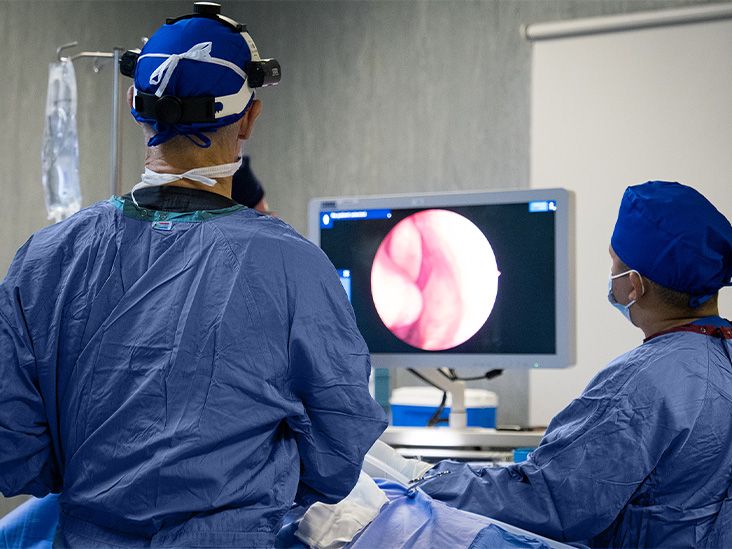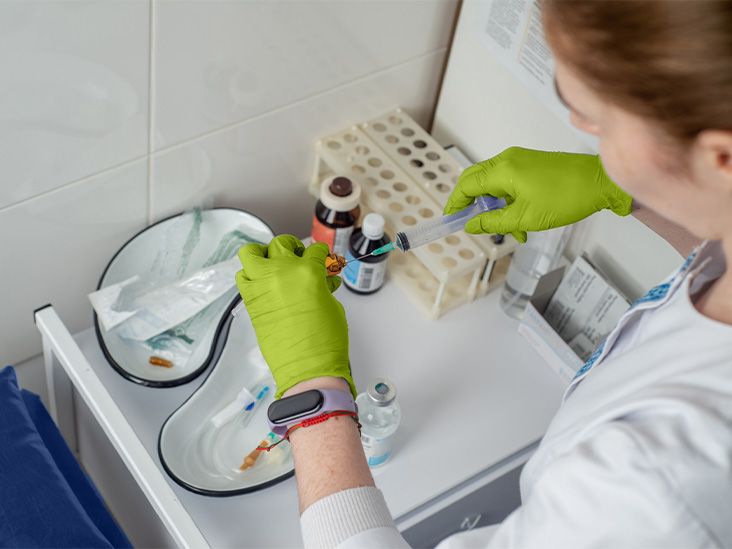Hey there. If you're reading this, you're probably facing something pretty serious a diagnosis of upper GI cancer. Whether that's stomach cancer, esophageal cancer, or cancer at the gastroesophageal junction, I know how overwhelming it can feel. Trust me, I've spent countless hours talking with people who've been through similar battles, and I've seen firsthand how much a clear explanation can mean.
You've likely heard about immunotherapy by now. Maybe you've even experienced the long hours hooked up to IV drips. But what if there was another way? Something that could be just as effective, but maybe a bit easier on your daily routine? That's where subcutaneous immunotherapy for GI cancers comes in, and today, we're going to explore what this means for you.
What Exactly Is SubQ Immunotherapy?
Let's start with the basics. You know how your immune system fights off colds and infections? Well, cancer is sneaky it finds ways to hide from your body's defenses. Immunotherapy is like giving your immune system a gentle nudge, saying, "Hey, I know that one looks harmless, but it's actually dangerous."
When we talk about subcutaneous immunotherapy, we're talking about injections that go just under your skin, rather than into your veins. Think of it like the difference between a flu shot and getting medicine through an IV. One is quick and can be done in your doctor's office, while the other requires more time and medical supervision.
How This Treatment Actually Works
Here's where it gets fascinating. Your immune system has these built-in "brake pedals" to prevent it from going overboard and attacking healthy cells. One of these brakes is called PD-1. Cancer cells are crafty they sometimes use PD-1 to essentially tell your immune system to leave them alone.
Immunotherapy drugs like nivolumab (now available as Opdivo Qvantig in subcutaneous form) work by blocking PD-1, effectively removing the brake so your immune system can recognize and attack cancer cells. It's like giving your body's natural defense system a clear target and saying, "Go get 'em."
Expert Insight: Immune checkpoints like PD-1 are kind of like "brakes" on your immune system. Immunotherapy lifts the brakes so your body can attack cancer.
The Shift from IV to Subcutaneous
If you've had immunotherapy before, you're familiar with the whole IV process the trip to the infusion center, the hours spent in a chair, the careful monitoring. With subcutaneous injections, that experience changes dramatically.
Instead of sitting for hours, a subcutaneous injection takes maybe 10-15 minutes. Instead of needing to go to a specialized infusion center, you might be able to get treatment at a local clinic or even at home with proper nursing support. It's like the difference between a road trip and a quick stop at your neighborhood coffee shop same destination, very different journey.
New Development: In December 2024, FDA approved Opdivo Qvantig (a subQ version of nivolumab) for use in upper GI cancers including gastric, esophageal, and GEJ cancers.
Why This Could Be a Game-Changer for You
Let's talk about what this really means for your day-to-day life. When you're already dealing with cancer treatment, every bit of convenience counts.
Fewer Hours in Treatment Chairs
I remember talking to Sarah, who was going through stomach cancer treatment, and she mentioned how those three-hour infusion sessions completely disrupted her day. She'd have to arrange childcare, take time off work, and then spend the rest of the day recovering from the experience.
With subcutaneous immunotherapy, that burden lightens significantly. Instead of clearing half your day for treatment, you're talking about a brief clinic visit. For many people, that means more time with family, less disruption to work schedules, and more control over their daily lives.
Better Access When Distance Is a Challenge
If you live in a rural area or far from major cancer centers, you know how exhausting the travel can be. Some people drive two or three hours just for treatment. That's time away from home, gas money, and a physically demanding routine when your body is already working hard.
Subcutaneous immunotherapy opens up possibilities for treatment closer to home. Local clinics, smaller hospitals, even visiting nurse services might be able to provide your care. It's not just about convenience it's about accessibility and making quality treatment available to more people.
The Psychological Comfort Factor
Here's something that doesn't get talked about enough the mental and emotional impact of treatment. Being tethered to IV poles, confined to treatment chairs, and dependent on medical schedules can take a toll on your sense of independence.
Many people describe subcutaneous injections as feeling more like they're taking an active role in their treatment. It's quick, it's straightforward, and it allows them to maintain more of their normal routine.
Real Experience: One patient said, "Getting my shot took 10 minutes not 3 hours like my IV used to."
What Studies Are Showing Us
| Benefit | Findings |
|---|---|
| Response Rate | Same as IV nivolumab |
| Duration of Response | No significant difference |
| Patient Preference | Over 70% preferred subQ |
The evidence is pretty compelling. Studies show that when it comes to how well the treatment works, subcutaneous immunotherapy matches traditional IV therapy. But when it comes to what people actually prefer? The numbers speak for themselves.
Understanding the Potential Risks
Of course, we need to talk about the other side of the coin too. Every treatment comes with potential side effects, and it's important to go into this with your eyes wide open.
Side Effects You Should Be Aware Of
Most of the common side effects of subcutaneous immunotherapy mirror what you might experience with IV immunotherapy. Things like fatigue, joint pain, and occasional itching are possibilities. Your blood sugar might fluctuate, and you might feel more tired than usual.
The good news? These are generally manageable with proper medical support. Your healthcare team will be monitoring you closely and adjusting treatment as needed.
What Makes SubQ Different
There are some side effects that are more specific to subcutaneous injections. Most commonly, people experience some redness, swelling, or tenderness at the injection site. It's usually mild and goes away within a few days.
This is different from IV therapy, where you might have concerns about vein irritation or infusion reactions. With subcutaneous injections, the risks shift to the injection site itself.
When to Be Extra Cautious
Serious autoimmune reactions, while rare, can happen with any immunotherapy. These might include inflammation of the colon (colitis), lung inflammation (pneumonitis), or thyroid problems. These aren't unique to subcutaneous delivery they're risks with immunotherapy in general.
Important Note: Your care team will monitor you closely after each injection especially the first few times.
Comparing What to Expect
| Side Effect Type | SubQ Injection | IV Infusion |
|---|---|---|
| Fatigue | ||
| Joint Pain | ||
| Itching | ||
| Site Reactions | Higher Risk | N/A |
| Organ Inflammation | Similar Risk | Similar Risk |
Who Might Be the Best Candidate?
This isn't a one-size-fits-all treatment, and that's perfectly okay. Medicine works best when it's personalized to your specific situation.
Your Cancer's Unique Characteristics
Not all upper GI cancers are the same, and not everyone responds to immunotherapy in the same way. Your medical team will look at factors like the specific type of cancer you have, whether it expresses PD-L1 (the partner to PD-1 that we talked about earlier), and how it has responded to previous treatments.
Some people are what we call "super responders" their bodies seem to love immunotherapy and respond incredibly well. Others might need a different approach, and that's completely valid too.
It's Not Just About the Cancer
Your lifestyle matters just as much as your medical profile. If you're someone who works irregular hours or has significant caregiving responsibilities, the convenience factor might be huge. If you live far from medical centers, that convenience becomes a necessity.
Some people are more comfortable with injections than IV access. Others might have veins that are difficult to access, making IV treatment challenging. These practical considerations are just as important as medical ones.
Expert Takeaway: Not everyone needs IV access and if a subQ option delivers the same results, that flexibility could be life-changing.
Questions Your Doctor Might Ask
Your oncologist will want to understand your whole picture, not just your cancer diagnosis. They might ask about your comfort with needles, your ability to manage regular clinic visits, and your previous experiences with immunotherapy.
This isn't about judgment it's about finding the treatment approach that gives you the best chance of success while fitting into your life as smoothly as possible.
Making the Right Decision for You
Ultimately, this decision is yours, made in partnership with your medical team. But having the right questions ready can make a huge difference in getting the information you need.
The Most Important Questions to Ask
Don't be afraid to ask specific questions about your situation. For example, is subcutaneous treatment appropriate for your specific type and stage of cancer? Have other people with similar profiles done well with Opdivo Qvantig?
Ask about clinical trials too there might be newer formulations or combination treatments that could benefit you. The world of cancer treatment is moving fast, and staying informed is part of staying empowered.
Thinking About Costs and Coverage
Let's be honest cost matters. While many insurance plans are starting to cover subcutaneous immunotherapy, coverage isn't universal yet. Some plans might require prior authorization, and there could be out-of-pocket costs that catch you by surprise.
It's worth having a conversation with both your doctor's office and your insurance company about what's covered and what you might need to pay for out of pocket.
User Tip: Write down what matters most to you shorter visits, fewer disruptions, more control.
What Lies Ahead for This Treatment
The approval of Opdivo Qvantig is just the beginning. Researchers are exploring subcutaneous delivery for other immunotherapy drugs, and combination therapies that might work even better are in development.
Exciting Developments on the Horizon
What's particularly exciting is the possibility of pretreatment testing that could predict who's most likely to benefit from subcutaneous immunotherapy. Imagine being able to know, before you start treatment, whether this approach is likely to work for you.
Researchers are also looking at how timing and combination with other treatments might improve outcomes. The field is evolving rapidly, and today's limitations might be tomorrow's breakthroughs.
Where the Research Is Headed
Current studies are examining everything from how your gut microbiome might affect treatment response to the optimal timing of subcutaneous injections when combined with other therapies.
Research Reference: See PMC article on current and evolving GI immunotherapies: PMC5506270
Wrapping It Up What This Means for You
As we wrap up, I want you to remember something important you're not navigating this alone. Every person's cancer journey is unique, and there's no shame in wanting treatment that works well and fits your life.
Subcutaneous immunotherapy represents a step toward more personalized, convenient cancer care. It's not necessarily better or worse than traditional IV therapy it's different. And sometimes, different is exactly what someone needs.
If you're currently facing treatment decisions for upper GI cancer, I encourage you to talk to your oncologist about whether subcutaneous immunotherapy might be right for you. Bring a list of questions, think about what matters most to you, and trust your instincts.
Cancer treatment isn't just about fighting disease it's about preserving your quality of life, your relationships, and your sense of self. Whatever treatment path you choose, make sure it aligns with who you are and what you need.
What aspects of subcutaneous immunotherapy are you most curious about? Do you have questions about how this might fit into your treatment plan? Feel free to share your thoughts sometimes talking through these decisions with others who understand can make all the difference.
FAQs
What is subcutaneous immunotherapy for GI cancer?
It's a form of immunotherapy where medication is injected under the skin instead of through an IV, helping the immune system target cancer cells more effectively.
How does subcutaneous immunotherapy work?
The treatment blocks proteins like PD-1 that prevent the immune system from attacking cancer, allowing your body to better recognize and fight tumor cells.
Is subcutaneous immunotherapy as effective as IV treatment?
Yes, studies show it has similar response rates and duration of effect compared to traditional IV immunotherapy for upper GI cancers.
What are the benefits of subcutaneous injections?
Benefits include shorter treatment time, fewer clinic visits, less disruption to daily life, and the ability to receive care closer to home.
Are there any specific side effects with subcutaneous immunotherapy?
Common side effects include fatigue and joint pain, while localized reactions like redness or swelling at the injection site may also occur.
Disclaimer: This article is for informational purposes only and does not constitute medical advice. Always consult with a healthcare professional before starting any new treatment regimen.
Related Coverage
A stomach cancer diagnosis includes upper endoscopy with biopsy, staging scans, and treatment planning to guide you forward....
Stomach cancer treatment options, risks, and recovery tips explained in plain language—helping you ask the right questions now....
Identify stomach cancer symptoms, know when they become urgent, and learn the steps doctors use for diagnosis and treatment....
Is there a real connection between kimchi stomach cancer risk? Get the facts on fermented food safety and what you can do to stay healthy....
Stomach cancer chemotherapy uses drug combos before or after surgery and as treatment for advanced disease, with side‑effect tips....
Compare stomach cancer vs ulcer symptoms, causes, tests and treatments, and spot red‑flag signs that require urgent attention....
Get insights on how immunotherapy for stomach cancer works, who benefits most, side effects, and key questions for your oncologist....
Learn how age, H. pylori, diet, smoking, and genetics affect stomach cancer risk and discover steps to lower your chances....
Subcutaneous immunotherapy for GI cancer offers a convenient alternative to IV treatment. Find out how it works and who it’s for....
Stomach cancer quizzes boost public knowledge on risk factors, symptoms, prevention and facts. Interactive quizzes empower early detection and care seeking....









